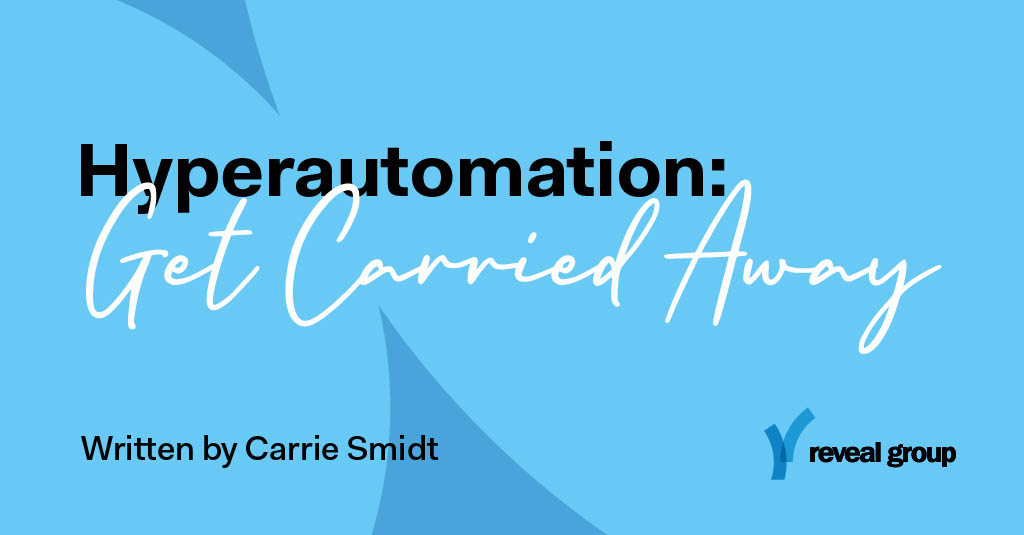
An Enterprize’s Journey to RPA: How to Get Started
Whether you are fully confident in RPA technology or slightly skeptical, Carrie provides specific steps on how to kickstart your company’s journey in automation.
You’ve heard of Robotic Process Automation/Intelligent Automation/Hyperautomation and you believe that it will be beneficial to implement a program and leverage this technology at your company, but you’re still thinking to yourself “How do I get started?!” How to get started heavily depends on where you fall on the spectrum of confidence in the technology. For those on the more skeptical end of the spectrum, dipping your toes in the water by doing a Proof of Concept (POC) is a common starting point.
Here is a high-level overview of the steps required when completing a POC:
1) Deciding the technology, you want to evaluate (Blue Prism, UiPath, Automation Anywhere, etc.)
2) Selecting a partner to support you
3) Choosing a high-volume, rules-based, repetitive process to automate.
Typically, there isn’t a big investment in infrastructure or training for POCs. Most of them are completed in about 4-6 weeks. The pros to this approach are that you get to see a working automation quickly and can see the value that an RPA program can bring. The con is that because you really didn’t invest much up front, so you will still have to do more work to ensure your automation is production-grade.|
Those who have vetted this technology and/or confident in its capabilities are ready to incorporate RPA into their overall corporate strategy, I recommend you take a more long-term, holistic approach to getting started. Typically, folks at this stage in the game have a clearly defined corporate strategy that includes RPA and Intelligent Automation. Their organizational structure is well-defined, so they know where RPA will fit in overall.
There are five other foundational elements (what we call a “Blueprint for Scale”) to sort out. These include:
1) Governance and Pipeline – Establishing a way to source automation candidates including the criteria that a process must meet to be considered for automation
2) Platform – Ensuring you design and build a scalable environment early on so your program can grow (because it will)
3) Delivery Methodology – Outlining how the processes will be built, tested and deployed into production.
4) CoE Team Structure – Defining who will vet process candidates, who will build and test your automation solutions and who will provide ongoing support.
5) Service and Support – Documenting how solutions will be monitored, maintained, and enhanced once they are in production.
It may sound daunting, but if you can already see the value an RPA and Intelligent Automation program will bring to your organization, it’s most effective to take a “do it right the first time” approach. Most of these moving parts can be done in parallel, so even with this approach, you can get your program off the ground quickly.
To learn more, arrange to speak with one of our experts about how Reveal Group can support you on your journey: Contact Us
